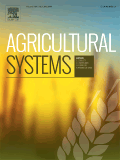Integrating agronomic information into economic models is required for simulating farming systems so as to better determine how agriculture can adapt to a continuously changing global economic and physical environment. In this respect, farm level mathematical programming bio-economic models can provide valuable insights for examining current and future pressures on resource use. Although a necessary condition for the effective use of such models is their calibration against observed data on input use, this information may not always be available, particularly at higher geographical scales. Imperfect or missing input markets pose an additional challenge to modelers. To overcome these difficulties, we present a theoretical framework for calibrating water-nitrogen yield response functions, which are used to represent the bio-physical aspects of crop production in bio-economic farm models at the European Union level. The method is based on the simulation results of an agronomic model, while the calibration criterion derives from the first-order conditions for farmers’ profit maximization and utilizes all available information from the Farm Accountancy Data Network. The method is tested on maize-producing farms in two regions in France.
Farm-level bio-economic modeling of water and nitrogen use: calibrating yield response functions with limited data
Citation: Humblot, P.; Jayet, P.A.; Petsakos, A. 2017. Farm-level bio-economic modeling of water and nitrogen use: calibrating yield response functions with limited data. Agricultural Systems. ISSN 0308-521X. 151: 47-60.
2018-01-26
BIGDATA, CLIMATE CHANGE, CROP PROTECTION
Europe
France
journal_article

